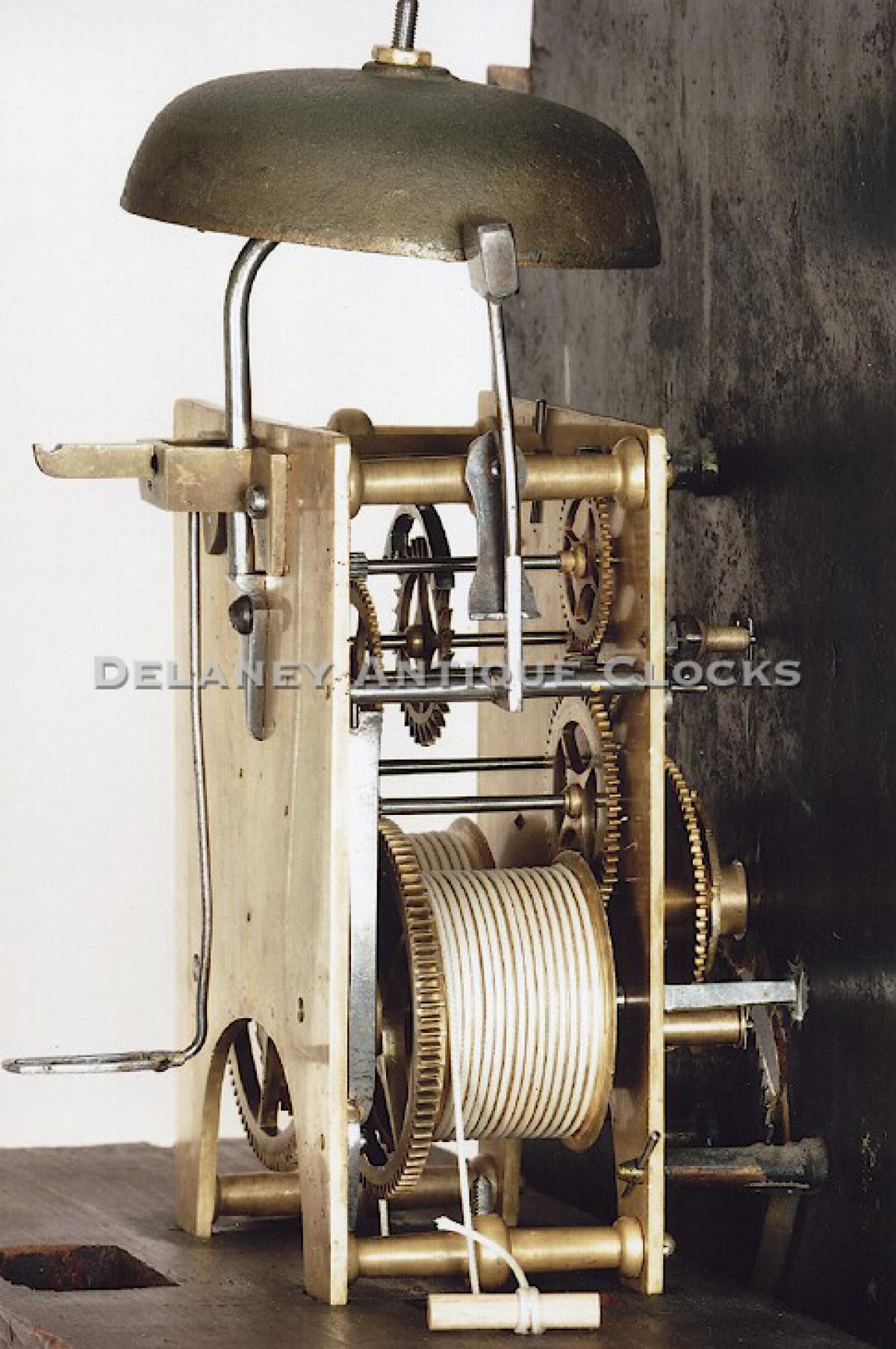David Wood of Newburyport, Massachusetts. A line inlaid mahogany case tall clock. 212079
This is a fine inlaid mahogany tall case clock with a lovely painted dial signed by David Wood of Newburyport, Massachusetts. 212079 David Wood of Newburyport, Massachusetts.
This is a fine inlaid mahogany tall case clock with a lovely painted dial signed by David Wood of Newburyport, Massachusetts. This clock was made circa 1800.
This formal example is constructed in mahogany and features several line inlays patterns that decorate the case. The secondary wood is New England white pine. The case retains an older finish that has mellowed into a soft patina. The case is supported by four applied flared French feet. They are tall and raise the base section up off the floor. They are visually joined together with a nicely shaped apron. This is separated from the base by a line inlay. The front panel of the base features a figured mahogany panel that is vertically grained. A delicate string inlay pattern separates the cross-banded border. The waist of this clock is long and narrow. It features a rectangular-shaped waist door that is formatted with veneers similar to the base section. This door is trimmed with applied moldings and opens to access the interior of the case. The front corners of the waist section are fitted with finely reeded quarter columns. These terminate in brass quarter capitals. The bonnet features a very interesting New England-style fretwork pattern. This is a pattern that may be unique to this clock. The frets and the reeded chimneys are original to this clock. The molded arch is supported by finely reeded bonnet columns. These flank the arched bonnet door and are mounted in brass capitals.
The iron dial is colorfully painted and of local origin. It was most likely painted in Boston by the Curtis & Nolen firm. Bright yellows raised gesso designs, painted fans, circles, and swags grab one's attention from across the room. This is a festive dial format. This dial is signed by the clockmaker. It reads \David Wood \/ Newburyport\" below the calendar aperture. The time track is formatted with a combination of Roman and Arabic numerals. This dial also features five-minute markers, subsidiary seconds, and a day of the month calendar. The iron hands are hand filed and are a traditional form.
The time and strike movement is of good quality. It is constructed in brass and features steel pinions. It is weight-driven and designed to run for eight days on a full wind and to strike each hour on a cast iron bell.
This clock stands approximately 97 inches or 8 feet 1 inch tall. The upper bonnet molding is 20.25 inches across and runs 10.75 deep. 212079.
"David Wood was born the son of John Wood (1727-1805) and Eunice (Fellows) Wood (1737-1801) in Newburyport, Massachusetts, on July 5, 1766. It is thought that he may have been apprenticed to either Daniel Balch Senior or to one of the members Mulliken family. All of whom were prominent Clockmakers in this region. David advertised in the Essex Journal and New Hampshire Packet on June 13, 1792, that he had set up a shop in Market Square, near Reverend Andrews Meeting House. Three short years later, he married Elizabeth Bird (1769-1846) of Newbury in 1795. It has become evident that David Wood was also a Retailer. In 1806 he advertised that he had for sale "Willard's best Patent Timepieces, for as low as can be purchased in Roxbury." In 1818, he and Abel Moulton, a local silversmith, moved into the shop formerly occupied by Thomas H. Balch. In 1824 he advertised that he had moved on the westerly side of Market Square opposite the Market House. After his wife's death in 1846, he moved to Lexington to live near his son David, who was a merchant in that town.
It has become quite obvious to us that David Wood was a very successful Clockmaker and Retailer of Clocks. Over the last 35 years of being in the business of selling clocks, we have sold many examples of wall, shelf, and tall case clocks bearing this Maker's signature on the dial.
















